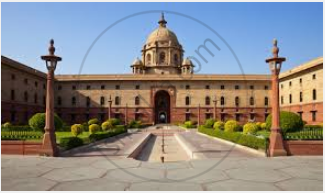Advertisements
Advertisements
प्रश्न
In the context of the Parliamentary form of government, answer the following question:
Name the three branches of government and state their respective functions.
उत्तर
According to the Constitution, the powers and functions of the government are divided into three branches: the legislature, the executive, and the judiciary.
The powers and functions are distributed among these branches in a manner that makes them equally balanced.
India is a parliamentary democracy. The Parliament, which is composed of the elected representatives of the Indian people, is vested with supreme power. The Parliament is the highest law-making body, and it makes laws for the entire country. Thus, the Indian people enjoy supreme power through their representatives in the Parliament.
In a parliamentary form of government, there is a very close relationship between the legislature and the executive.
After the general elections, the elected representatives of the people form the Lok Sabha. The President appoints the leader of the majority party or the single largest party or group of parties within the Lok Sabha as the Prime Minister. Generally, the Prime Minister chooses his/her Council of Ministers from among the elected members of the Lok Sabha. He/she may also choose a Rajya Sabha member as a minister.
The Lok Sabha exercises control over the Council of Ministers, which is responsible and answerable to the Lok Sabha for all its policies, decisions, and actions. This makes the Parliament the supreme authority in the government because it has the final authority to accept or reject the decisions of the executive.
संबंधित प्रश्न
Fill in the blanks:
Subjects for legislation are divide into three lists-the ______ List, the ________List, and the ______List.
At present, the Lok Sabha consists of ______.
Answer the following question in one or two words/ sentences:
How are the members of the Rajya Sabha elected?
Answer the following question briefly:
In the context of the Parliamentary form of government, answer the following question:
What are the main features of a parliamentary form of government?
Answer the following question briefly:
Give an account of the Lok Sabha with reference to its term.
Name the following:
The current ministers in charge of Defence.
Name the following:
The current ministers in charge of External Affairs.
Until 1950, the building in the picture was known as ‘Viceroy’s House’, and served as die residence of the Governor General of India.

Identify the building. Whose official residence is it now?
Match the contents of Column A with those of Column B.
| Column A | Column B |
| 1. The speaker | (a) Presides over the Rajya Sabha |
| 2. The Vice President | (b) The legislative organ of the Union Government |
| 3. The Rajya Sabha | (c) The House of People |
| 4. The Parliament | (d) Presiding Officer of the Lok Sabha |
| 5. The Lok Sabha | (e) Permanent House |
The Parliament is a ______ legislature.
